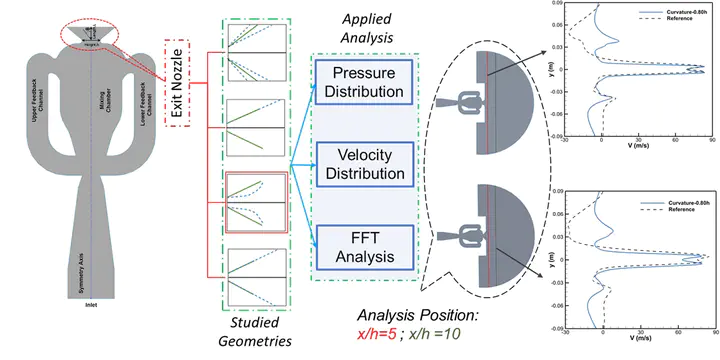
Abstract
When pressurized with a fluid, the sweeping jet actuator (SWJA) emits a self-induced and self-sustained temporally continuous, but spatially oscillating bi-stable jet at the outlet. The SWJA adds up local momentum using the Coanda extension without any moving parts and, therefore, can be a promising tool for suppressing aerodynamic flow separation. However, the SWJA needs to be integrated into curved aerodynamic surfaces with an angle. The present study focuses on investigating the effects of various exit nozzle geometries on the flow field. The geometric parameters considered were the exit nozzle angle, diffuser arm length, and curvature. The working fluid was air, and the mass flow rate was 0.015 lb/s. A set of time-dependent flow fields was computed using a two-dimensional unsteady Reynolds-averaged Navier–Stokes (URANS) simulation. The time history of pressure was recorded inside the upper and lower feedback channels. The jet oscillation frequency was obtained by employing the fast Fourier transform (FFT) for all datasets. The results were compared against the baseline case and data available in the literature. The results showed that external geometric variations at the nozzle exit had a negligible impact on the oscillation frequency. However, there were notable effects on the pressure and velocity distribution in the flow field, indicating that the actuator had sensitivity towards the geometric variation of the exit nozzle—the wider the exit nozzle, the lower the downstream velocity. Notably, we observed that the mean velocity at the exit nozzle downstream for the curvature case was 40.3% higher than the reference SWJA.